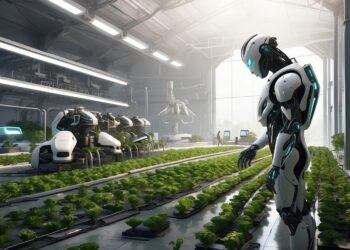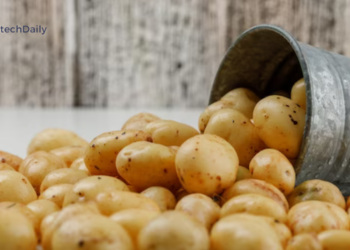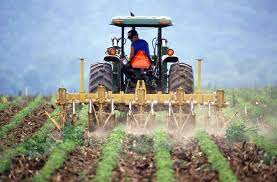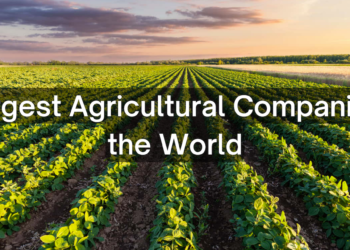Agriculture is a critical sector for global food security, supporting the livelihoods of billions of people and providing food for an increasing population. However, the sector faces numerous challenges, including the impacts of climate change and the need to reduce greenhouse gas emissions from land-use practices.
To tackle these challenges, farmers and other stakeholders are turning to “climate-smart agriculture” (CSA), a concept that combines traditional agricultural practices with innovative technologies and approaches to improve productivity, increase resilience to climate change, and reduce greenhouse gas emissions.
Climate-Smart Agriculture
CSA aims to promote sustainable land use and increase the resilience of agricultural systems to the impacts of climate change. It is a multi-faceted approach that includes a range of activities, such as improving soil health, promoting water management, and enhancing agroforestry practices. These activities can help farmers to increase their productivity, reduce the risk of crop failures, and mitigate the impacts of climate change.

One of the key components of CSA is the use of sustainable land-use practices, such as agroforestry and conservation agriculture. Agroforestry involves integrating trees into agricultural landscapes to provide a range of benefits, including increased soil fertility, improved water management, and reduced greenhouse gas emissions. Conservation agriculture, on the other hand, involves maintaining soil cover, reducing tillage, and using crop rotations to improve soil health and reduce erosion.
Another important aspect of CSA is the use of innovative technologies, such as precision agriculture and digital agriculture. Precision agriculture uses sensors, GPS, and other technologies to provide farmers with real-time data on soil moisture, crop growth, and other key indicators.
This information can be used to make more informed decisions about crop management and improve productivity. Digital agriculture, on the other hand, involves using digital tools and platforms to connect farmers with the information and resources they need to make better decisions about their land use.
Sustainable Land Use
Sustainable land use is an essential component of CSA, as it helps to maintain the long-term productivity of agricultural systems and reduce the impacts of climate change. It involves managing land in a way that balances economic, social, and environmental considerations, and ensuring that land use practices do not cause harm to the environment.
One of the key practices for sustainable land use is the reduction of greenhouse gas emissions from agriculture. This can be achieved through the use of practices such as agroforestry, conservation agriculture, and reducing tillage. By reducing the amount of carbon in the soil and promoting the growth of trees, these practices can help to sequester carbon and reduce emissions.

Another important aspect of sustainable land use is the protection and restoration of natural habitats, such as forests and wetlands. These habitats provide important ecosystem services, including water regulation, carbon sequestration, and wildlife habitat. By protecting and restoring these habitats, farmers can help to reduce the impacts of climate change and improve the resilience of their agricultural systems.
Adoption of Climate-Smart Agriculture
The adoption of CSA has been growing in recent years, as farmers, governments, and development organizations recognize its potential to improve agricultural productivity and resilience to the impacts of climate change. However, the full adoption of CSA requires the support of a range of stakeholders, including policymakers, researchers, and the private sector.
Governments have a key role to play in promoting the adoption of CSA, by providing the policy and financial support that farmers need to implement sustainable land-use practices and innovative technologies. This support can include the provision of subsidies, training, and technical assistance, as well as the creation of markets for sustainable agricultural products.
The private sector also has a critical role to play in the adoption of CSA, by providing the products and services that farmers need to implement sustainable land-use practices and innovative technologies. Companies can provide financing, technical assistance, and other support to farmers, as well as develop new products and services that are tailored to the needs of farmers in different regions.
Finally, researchers and academic institutions have a key role to play in the development and dissemination of new CSA technologies and practices. They can work with farmers, policymakers, and the private sector to develop and test new approaches to sustainable agriculture, and share their findings with the wider community.
Challenges to Adoption of Climate-Smart Agriculture Despite the growing interest in CSA, there are a number of challenges that need to be overcome to ensure its widespread adoption. These include:
- Lack of awareness: Many farmers are not aware of the potential benefits of CSA, and may not have access to the information and resources they need to implement these practices.
- Limited access to finance: Farmers may not have access to the financing they need to invest in new technologies and sustainable land-use practices.
- Limited technical capacity: Many farmers may not have the technical expertise they need to implement new technologies and sustainable land-use practices.
- Market and institutional barriers: There may be barriers to the adoption of CSA, including a lack of market demand for sustainable agricultural products, and weak institutions and policies that do not support sustainable land use.
To overcome these challenges, it is essential that governments, the private sector, and researchers work together to create an enabling environment for the adoption of CSA. This can include providing farmers with access to financing, training, and technical assistance, and developing policies and institutions that support sustainable land use.
Future of Climate-Smart Agriculture The future of CSA looks bright, as more and more farmers, policymakers, and businesses recognize its potential to improve agricultural productivity, increase resilience to climate change, and reduce greenhouse gas emissions. However, its widespread adoption will require the support of a range of stakeholders, including governments, the private sector, and researchers.

In the coming years, it is likely that the focus on CSA will continue to grow, as more countries adopt policies and programs to promote sustainable land use and innovative agricultural technologies. This will result in increased investment in the sector, and the development of new and innovative approaches to sustainable agriculture.
Ultimately, the success of CSA will depend on the willingness of farmers, policymakers, and businesses to embrace new technologies and sustainable land-use practices and to work together to create a more sustainable and resilient future for agriculture.
Conclusion
Climate-smart agriculture and sustainable land use are essential for the future of agriculture, and for the global food security of the world’s growing population. They provide a way for farmers to improve their productivity and resilience to the impacts of climate change while reducing greenhouse gas emissions and protecting the environment. By embracing these practices, farmers can help to ensure a sustainable future for agriculture and for the planet as a whole.













